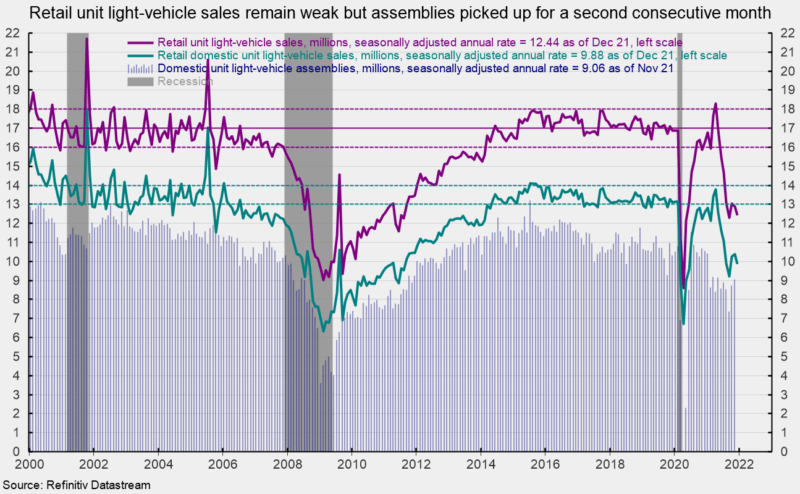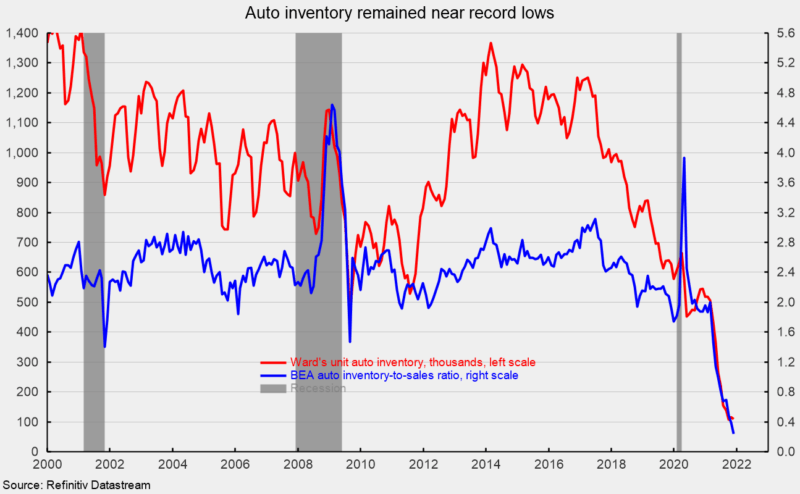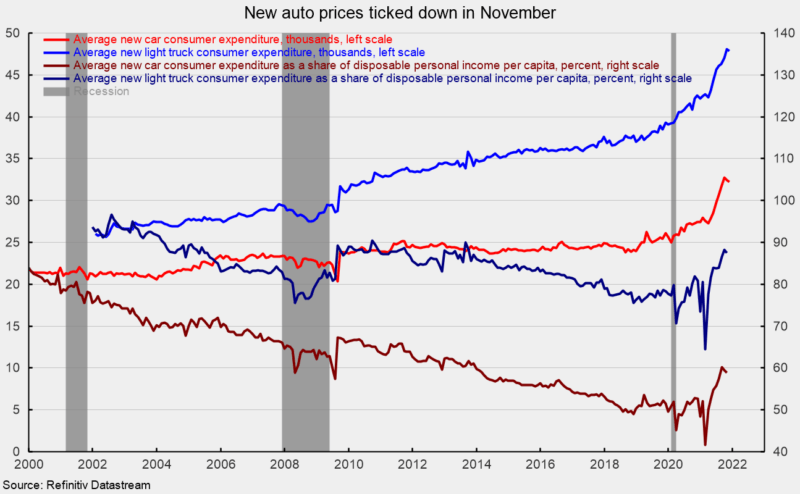Unit Auto Sales Fell in December but Assemblies Rose in November
Sales of light vehicles totaled 12.4 million at an annual rate in December, down slightly from a 12.9 million pace in November and 13.1 million in October. The December result was the seventh consecutive month below the 16 to 18 million range, beating the six-month span from March through August 2020 (see first chart). Weak auto sales are largely a result of component shortages that have limited production, resulting in plunging inventory and surging prices.
Breaking down sales by origin of assembly, sales of domestic vehicles decreased to 9.9 million units versus 10.4 million in November, a drop of 4.9 percent, while imports rose to 2.56 million versus 2.51 million in November, a rise of 1.8 percent. Domestic sales had generally been in the 13 million to 14 million range in the period before the pandemic, averaging 13.4 million for the five years through December 2019. The domestic share came in at 79.4 percent in December versus 80.5 in November.
As with some other recent economic reports, there may be some early signs of easing supply chain issues. Domestic assemblies increased for a second consecutive month in November, coming in at 9.3 million at a seasonally adjusted annual rate. That is up from 9.0 million in October and 7.6 million in September, but still well below the 11.2 million pace for the five years through December 2019 (see first chart).
However, component shortages, especially computer chips, continue to disrupt production for most manufacturers, creating a scarcity for many models, leading to lower inventory and higher prices. Ward’s estimate of unit auto inventory came in at 109,300 in November, near the all-time low (see second chart). The Bureau of Economic Analysis estimates the inventory-to-sales ratio was a record low 0.242 in November (see second chart).
The plunging inventory levels have pushed prices sharply higher over the last two years. However, prices did tick down in November (another possible sign of easing conditions) with the average consumer expenditure for a car falling to $32,241 in November while the average consumer expenditure on a light truck fell to $47,875 (see third chart). The November levels represent 12-month gains of 17.6 percent and 12.5 percent, respectively.
As a share of disposable personal income per capita, average consumer expenditures on a car came in at 58.9 percent versus just 41.6 percent in March 2021 while the average consumer expenditure on a light truck as a share of disposable personal income per capita was 87.4 percent versus 64.5 percent as recently as March 2021 (see third chart).








